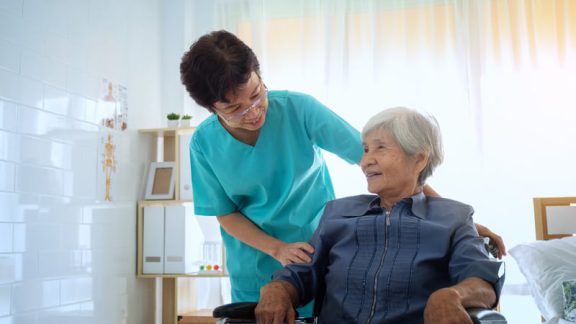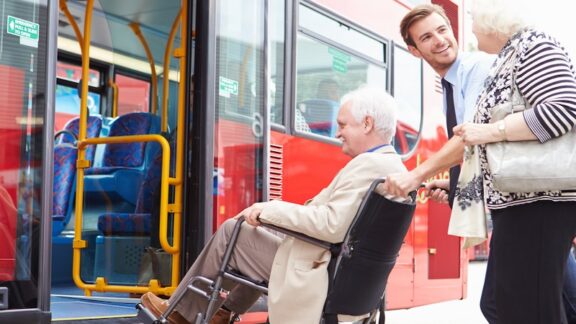Elder abuse is a distressing and often hidden issue that affects countless seniors worldwide, particularly those residing in care facilities. As our global population ages, more families are turning to assisted living facilities and nursing homes to provide care for their loved ones. While many facilities offer compassionate and professional care, a troubling rise in reports of elder abuse in care homes highlights a growing crisis. Understanding the factors contributing to this increase, the signs to watch for, and ways to protect our elderly is essential in combatting this hidden epidemic.
Understanding the scope of elder abuse
Elder abuse can take various forms, including physical, emotional, sexual, and financial abuse, as well as neglect. The World Health Organization estimates that about one in six people aged 60 and older experience abuse annually, with higher rates observed in care facilities where there is limited oversight. Abuse in elder care homes can be particularly insidious, as many seniors are vulnerable due to physical disabilities, cognitive decline, or social isolation.
In addition to immediate harm, abuse has long-term consequences for seniors, impacting their mental health, quality of life, and, in severe cases, leading to premature death. According to the National Center on Elder Abuse, seniors who experience abuse are three times more likely to die prematurely than those who are not abused. This alarming statistic underscores the need for immediate action to address elder abuse in care settings.
Key factors contributing to the rise in elder abuse in care homes
Staff shortages and burnout
A major factor behind the rise in elder abuse is the staffing crisis affecting many care facilities. With increasing demand for elder care services, facilities are often understaffed, leaving employees overworked and exhausted. Long hours, inadequate training, and emotional stress contribute to caregiver burnout, which can make workers more susceptible to acting out in frustration or neglecting patient needs. In some cases, overstretched staff may feel resentful or become desensitized to the needs of the residents, leading to mistreatment.
Lack of training and resources
Inadequate training is another critical issue in elder care. Caregivers are often responsible for handling complex medical needs, administering medications, and providing emotional support to residents. Without proper training and resources, they may feel overwhelmed and ill-equipped to deal with these demands, increasing the likelihood of mistakes, neglect, and abusive behavior. Facilities that lack funding or prioritize profits over quality care often fail to provide essential training, further compounding the problem.
Isolation and limited oversight
Many seniors in care facilities are isolated from family and friends, either due to mobility challenges or cognitive decline. This isolation creates an environment where abuse can go unnoticed, as victims are unable or unwilling to report incidents. In addition, facilities often lack adequate oversight, with irregular inspections and limited accountability measures. This allows abusive behavior to go unchecked, particularly in facilities that cut corners on staffing or avoid rigorous evaluation processes.
Underreporting and fear of retaliation
A significant barrier to addressing elder abuse is the underreporting of incidents. Many seniors may feel ashamed, fear retaliation, or lack confidence that reporting abuse will lead to meaningful change. Additionally, some seniors with cognitive impairments may struggle to communicate their experiences, and family members may not always recognize signs of abuse, particularly when the care facility downplays concerns.
Recognizing the warning signs of elder abuse
It’s essential for family members and friends to remain vigilant and aware of the warning signs of elder abuse. Some common indicators include:

- Physical signs: Unexplained bruises, cuts, fractures, or bedsores, particularly if they are frequent or untreated, can indicate physical abuse or neglect.
- Behavioral changes: Withdrawal, depression, anxiety, and a sudden personality change can be signs of emotional or psychological abuse.
- Neglect and poor hygiene: Dirty clothing, unkempt appearance, dehydration, and malnutrition may suggest neglect.
- Financial irregularities: Unexplained withdrawals, missing belongings, or sudden changes in financial status may indicate financial abuse.
- Fearfulness around staff: If a senior appears fearful or avoids certain staff members, this could be a red flag.
If any of these signs are present, it’s crucial to address concerns with the care facility and, if necessary, escalate to appropriate authorities.
More from Seniors Guide on potential signs of elder abuse
Steps to combat elder abuse in care homes
Addressing elder abuse in care homes requires a multifaceted approach that includes policy reform, improved oversight, and family advocacy. Here are some ways to help combat elder abuse:
Strengthening regulations and oversight
Governments and regulatory agencies need to prioritize regular inspections of elder care facilities and enforce strict compliance with care standards. Increased funding for regulatory bodies could allow for more frequent inspections and unannounced visits, creating a safer environment for seniors.
Improving staff training and support
Providing ongoing training for caregivers can ensure they are prepared to meet the complex needs of elderly residents. Training should include handling difficult behaviors, managing stress, and recognizing signs of elder abuse. Offering support services to reduce burnout can also create a more compassionate and motivated workforce, reducing the likelihood of abuse, as can providing competitive pay and benefits.
Encouraging family involvement and advocacy
Families play a vital role in safeguarding the well-being of their loved ones in care. Regular visits, communication with facility staff, and active involvement in care decisions can help deter abuse. In addition, families should feel empowered to report concerns to facility administrators or external agencies, such as ombudsmen or elder abuse hotlines, without fear of retaliation.
Implementing technology for monitoring and accountability
Technology can enhance transparency and accountability in care facilities. Installing surveillance cameras in common areas, using digital monitoring for medication administration, and implementing electronic health records can help track and prevent abusive behavior. Facilities should also encourage residents and families to use communication tools to stay connected and report any concerns.
The path forward
Elder abuse in care homes is a deeply troubling issue that requires urgent action from policymakers, care facility administrators, and society at large. While the rise in elder abuse presents a complex challenge, proactive measures such as better regulation, improved training, family involvement, and technological oversight can help address this crisis. Protecting the rights, dignity, and safety of our elderly population is a moral imperative, and by working together, we can ensure that every senior receives the compassionate care they deserve.




